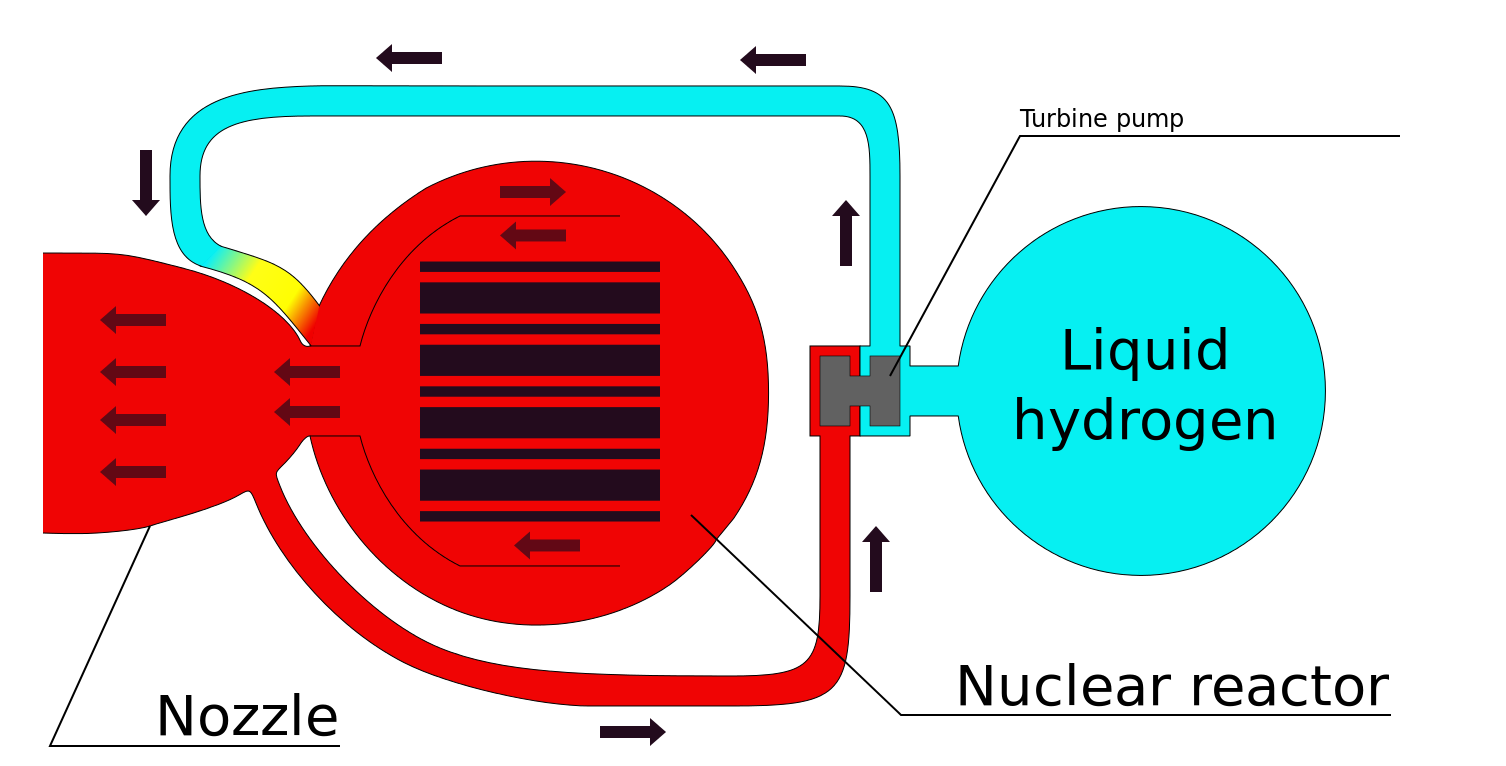Nuclear Reactors 659 - New NASA Budget Provides One Hundred Million Dollars For The Development Of Nuclear Thermal Propulsion
Nuclear_thermal_rocket_en.svg_.png

I have written before about the possibility of using nuclear power to propel spacecraft. This idea has been around for decades but despite success in designs and testing of nuclear thermal propulsion (NTP) system it was abandoned as interest in space exploration waned in the early 1970s.
Los Alamos Scientific Laboratory began researching nuclear engines for spacecraft in 1952. By 1955, this research was consolidated under Project Rover. Progress was swift and the NASA Marshall Flight Center began planning for test flights of nuclear engines as early as 1964. The Space Nuclear Propulsion Office was created about that time so that NASA and the Atomic Energy Commission could work together on advanced nuclear propulsion systems. The Director of the new SNPO decide to delay the nuclear engine tests until a strict set of objectives could be accomplished.
Aerojet and Westinghouse were selected by the SNPO to work in the design of the Nuclear Engine for Rocket Vehicle Application (NERVA). Different reactors and engines were designed and tested until around 1966 when a final design called the NERVA NRX/EST engine began tests. Several versions of NERVA were successfully tested and verified that the final design could produce about twice as much power as a comparable chemical engine. NASA was planning on using NERVA for a number of projects including a manned plight to Mars in 1978 but Congressional support faded, and budgets were cut. Although the tests were successful, the NERVA program ended in 1972.
There is a hundred million dollars in the NASA budget recently passed by Congress for the development of nuclear thermal rocket engines which NASA hopes to demonstrate by 2024.
In a nuclear thermal rocket engine, liquid hydrogen is superheated in a nuclear reactor and the resulting plasma is shot out of the engine to provide thrust. NPT would be much more efficient current chemical rocket fuel. With more powerful engines, spacecraft should be able to travel farther faster and with less fuel. This would also result in astronauts experiencing much less radiation and microgravity than traveling in current spacecraft. Compared to the NTP systems studied for the NERVA project, subsequent developments in nuclear technology will permit engineers to design and construct much cheaper, lighter and safer spacecraft. All of the current launch systems including the Space Launch System, the SpaceX Starship and the Blue Origin New Glenn could be improved by the use of NTP systems.
One problem that will plague the development of any NTP system will be public opposition from the anti-nuclear movement over fears of nuclear accidents during launch. Of course, NASA will do it’s best to minimize any risks attending the launch of NTP systems. This will not prevent demonstrations or lawsuits, but they will counter the arguments of the anti-nuclear activists.
While our current space programs will continue to land probes on the Moon, Mars and other astronomical bodies such as asteroids which will provide a lot of scientific knowledge, NTP might allow humanity to expand and settle the whole solar system. NTP system will move more cargo and people, faster, further and cheaper than current rocket technology.